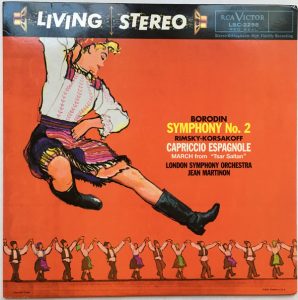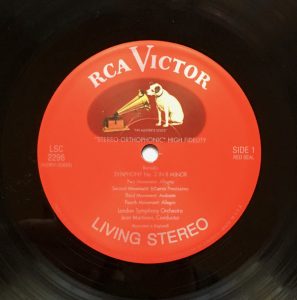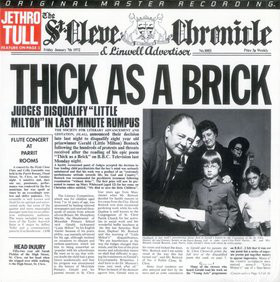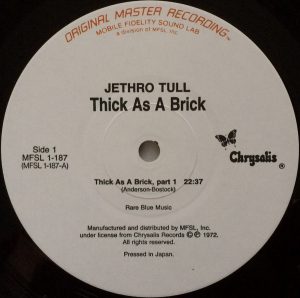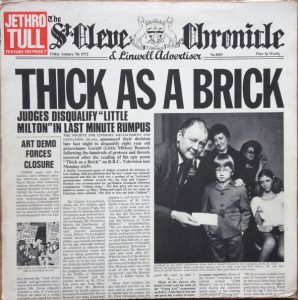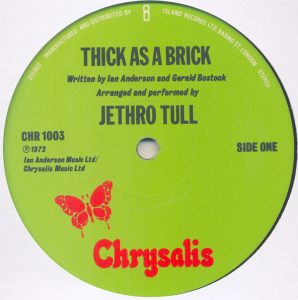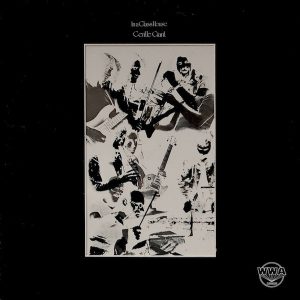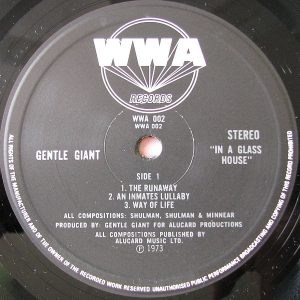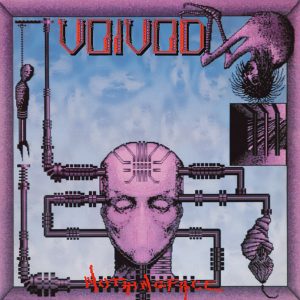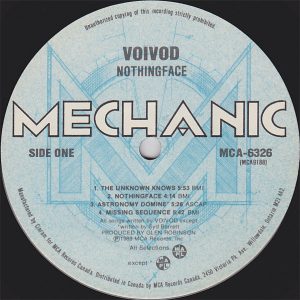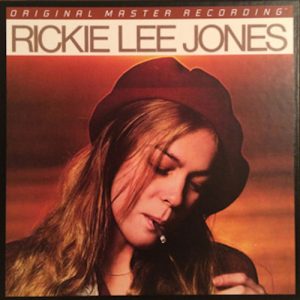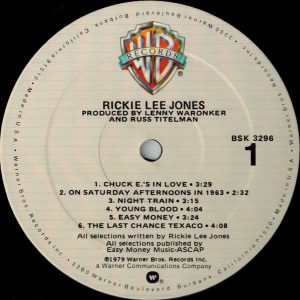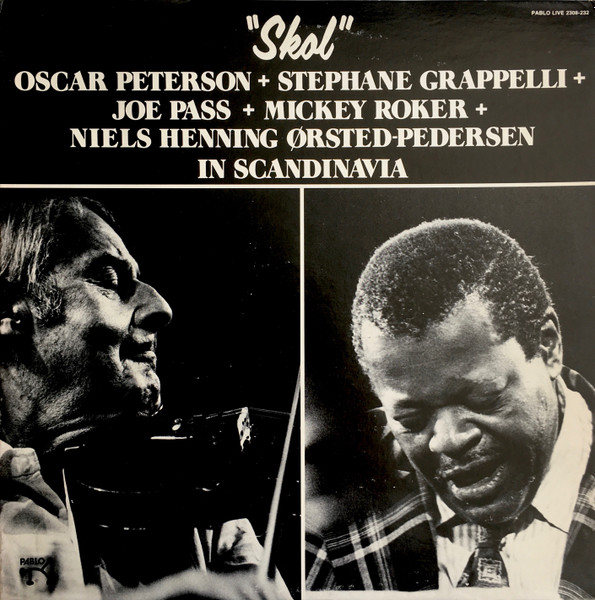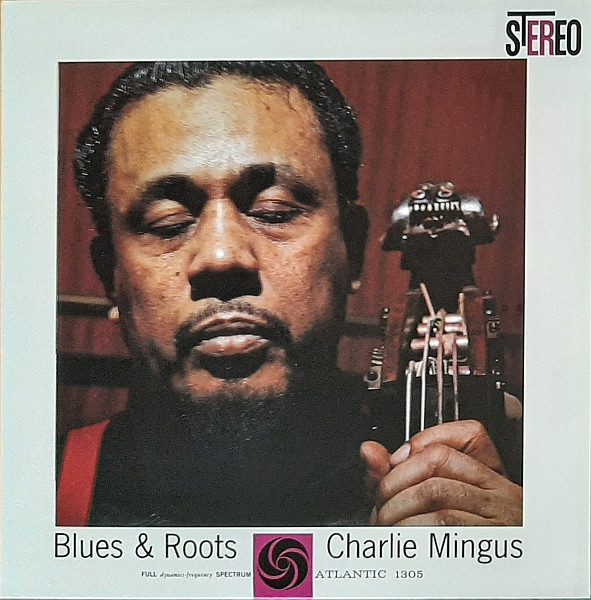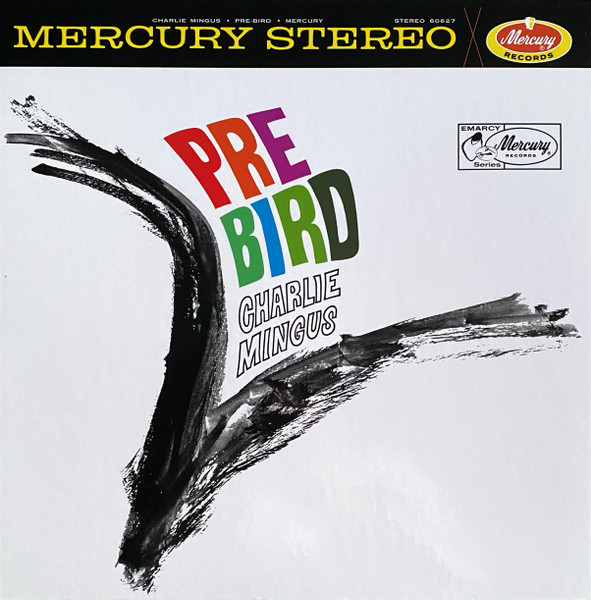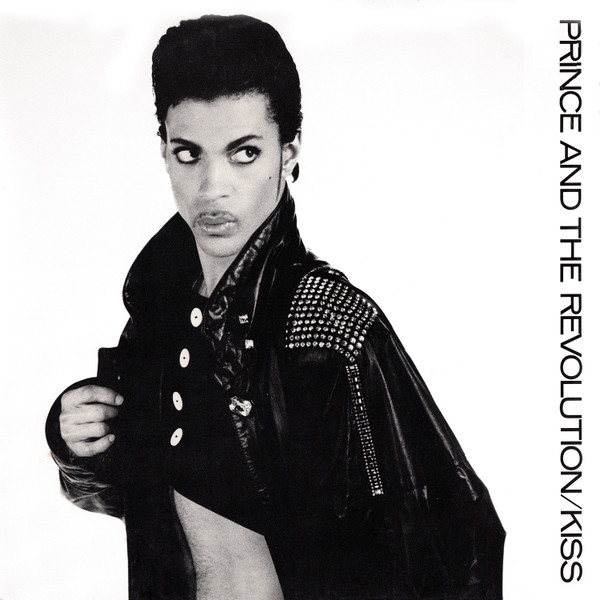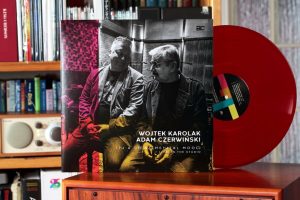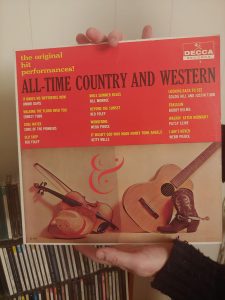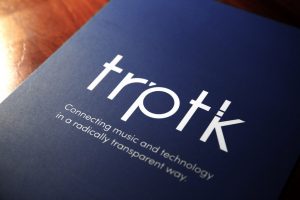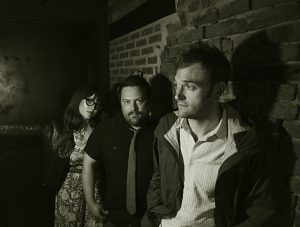This is an ongoing project by Claude Lemaire of Soundevaluations.
56. Borodin, Symphony no.2 / Rimsky-Korsakoff – Capriccio Espagnole The London Symphony Orchestra, Jean Martinon. RCA Victor Red Seal – LSC-2298 (1959), Classic Records – LSC-2298 (1996?), 180g, Living Stereo series, Genre: classical, orchestral, romantic.
Tightly led and influenced by Mily Balakirev, Alexander Borodin—the eldest of 'The Five'—along with Cesar Cui, Mussorgsky, and Rimsky-Korsakov were also identified as The Mighty Handful; a small group of young self-trained amateurs-composers from 1856 to 1870—highly responsible for influencing the course of Russian music. Borodin's best known large-scale work—his four part symphony—sets the stage with ambitious aplomb, alternating between major and minor thirds throughout the score. Monumental, 'military-esque', and majestic in grandeur, the piece was written between 1869 and 1876, with a final orchestral revision in 1879, the latter premiered by Russian counterpart Rimsky-Korsakov that same year. Originally released in 1959 on the Red Seal label, the captured sound of Kingsway Hall, recorded by Decca engineer Alan Reeve, and later remastered, and cut by Bernie Grundman is immensely impressive: bold, brawny, brassy, and solid are all adjectives that come to mind upon my many listening impressions. Tonal balance is spot on with realistic string, and woodwind timbres—in particular the brass fortes cut through with fiery force, no doubt due in part to Martinon's exciting direction of The London Symphony Orchestra. The dynamic as well as the frequency range are both huge, making this particular pressing quite challenging, all the way from source to speakers. Soundstage scale—width, height, and depth–is also up there with the very best on record, confirming once more that with certain Living Stereo's, Grundman and Classic Records really got it right. Side two opens with Rimsky-Korsakov's Capriccio Espagnole which is equally captivating musically, and sonically.
57. Jethro Tull, Thick as a Brick. Chrysalis – CHR 1003 [Island Records] (UK) (1972), MoFi – MFSL 1-187 (1985), 33 1/3 rpm. Genre: progressive rock
Progressive's peak period of creativity, and popularity—if ever one could conjure up such a scenario—is arguably around the years 1971 to 1973, producing many masterful gems such as: Genesis' Foxtrot and Selling England by the Pound; Yes' The Yes Album and Fragile; King Crimson's Lark's Tongues in Aspic; ELP's Tarkus; Mike Oldfield's Tubular Bells; and the all-time biggest selling—if one stretches a bit the genre's definition—Pink Floyd's DSOTM. Inspired by Monty Python satire, Jethro Tull's Thick as a Brick is just another jewel in the crown of the mighty British Empire that ruled the artistically inclined airwaves, roughly covering the decade from 1967 with Sgt. Pepper' right up to the uprising of the anti-establishment punk movement circa 1976—wherein the original pioneering progressives were starting to sound stale. Following the thunderous success of Aqualung, the band led by Ian Anderson, which by now had carved out a subgenre niche for itself melding a triad of art, hard, and folk rock, were preparing to push further the more progressive elements from their musical recipe into a full-fledged concept album comprising only one composition divided in two lengthy parts. Combining medieval and renaissance folk, jazz, rock, and odd time signatures within classical musical structures, the complex composition confirmed the proficiency of the band through tight rapid dynamic shifts. The resulting release in March of 1972 was not only a musical high point of their career but fortunately for us audiophiles, a solid sonic success as well, making it their best sounding album by far—a situation not unlike Rush with 2112, whereby a gifted rock band with progressive inclinations broadly suffers from badly mixed, and mastered productions. Superbly recorded by engineer Robin Black at Morgan Studios in London England—home to such sonic wonders as Led Zep II, Tea for the Tillerman, Meddle, America, etc.—on a 24-track Ampex, my original UK 'Pecko Porky' pressing cut by George Peckham has everything going for it: great tonal balance, wide frequency range, warm yet precise in rhythmic precision when called upon. I don't have the 1985 MoFi, but I had compared it some years ago from a friend's collection with both my UK original, and my first press CAN [Reprise MS 2072]—which is also quite good and pleasant—and the MoFi sounded equally excellent with a hint more warmth than the UK, the latter having a bit more mid presence, making them both equal winners, and worthy, while the first press CAN copy came out close behind the two others.
58. Gentle Giant, In a Glass House. WWA Records – WWA 002 (UK) (1973), 33 1/3 rpm. Genre: progressive, experimental rock
Another giant step that would constitute a worthy addition to the previous prog citations above is Gentle Giant's fifth album In a Glass House, also released during the aforementioned apex, in September 1973. Created by three brothers—Phil, Derek, and Ray Schulman–in 1970, and accompanied by a few other talented musicians along the way, the band cultivated a small but serious following, reaching their peak period between 1972's Octopus and The Power and the Glory two years later. At the time, conservative Columbia corporate chiefs considered the album In a Glass House too 'uncommercial' for the North American market, thus dropping the band from their roster, resulting in the necessity for retailers, and fans alike to import the LP from Mother England—insuring us audiophiles to end up with a better chance of finding an original UK pressing with superior sound most probably. Admittedly a tad more experimental than their British counterparts; rather than following the 1970s prog prototype 'formula', the five multi-instrumentalists challenge us—as well as themselves–by combining complex musical structures utilizing an array of unorthodox instruments within the realm of rock as well as vocal polyphony, and polymeters more in line with medieval classical forms. Self-produced, it was engineered by Gary Martin in July 1973 at Advision Studios, while mastered and cut—at Trident I suppose–by Ray Staff, both situated in London, England. The instrument mixdown is finely executed with the rapidly sharp 'snappy' kick, and remaining drumkit, particularly standing out, well defined dynamically, and rhythmically. Multi-layered vocals plus myriad percussive timbres are also well served. Tonal balance is excellent, leaning more towards a quick, clean, neutral, 'solid state' signature, than the typical tube warmth we tend to associate with the early 1970s, and not unlike a good direct-to-disc sonic footprint featuring stellar dynamics for the genre. The sole caveat is a slight lack or lightness in the bottom end lows, in order to give it more weight, majesty, and authority. Pretty much on the same level playing field as Octopus at least for my acquired taste.
59. Voivod, Nothingface. MCA, Mechanic Records – MCA-6326 (Can.) (1989), 33 1/3 rpm. Genre: prog metal
It is well known—at least to those working in the music milieu—that the Canadian province of Québec is distinctively, and historically recognized as having a deep appreciation for two musically-challenging genres—progressive, and heavy metal—as well as Montréal serving as a metropolis for the disco scene during the 1970s, followed closely by the underground punk-hardcore-alternative crowd found in such places as the famous Foufounes Electriques. Having set foot a few times in 'Foufs' in the mid-1980s to early 1990s, I can attest to its importance in supporting the scene, as well as discovering burgeoning various metal bands playing exciting live sets such as Groovy Aardvark, Dead Brain Cells (DBC), and most importantly Voivod. After debuting in 1984, followed by a couple of subsequent albums, in the noisier thrash metal subgenre, the Jonquière-based quartet conquered the territoire with its 1989 metal masterpiece Nothingface, producing a perfect blend of prog and metal—with subtle elements reflecting Rush's precision, King Crimson's dissonant chords of triads, and tritones along with a captivating cover version of Pink Floyd's "Astronomy Domine" taken from their 1967 psychedelic debut The Piper at the Gates of Dawn [Columbia SCX 6157]—adding of course their own original 'trash touch'. There is no weak track on this LP; every one is a stunner from start to finish in creative compositions, dissonant arrangements, and powerful performances. Furthermore, producer Glen Robinson, assisted by engineers Benoit Lavallée, and Rob Sutton did a fantastic job with the sound which was recorded digitally at Victor Studio in Montréal, and mixed digitally at Powerplay Studio in Long Island City, NY. Contrary to the subgenre's norm, and music period, the tonal balance is spot on, linear, and lowly compressed with non-fatiguing sound, and surprisingly—for digital—clean extended cymbals. In fact the whole drumkit—kick, snare, toms—is articulate, with timbrally realistic, struck 'snappy' skins, under the batons of "Away" aka Michel Langevin's impressive playing. Guitarist "Piggy" aka Denis D'Amour along with vocalist "Snake" aka Denis Bélanger, bring forth their unique dissonant stylistic signature to the foray. Bernie Grundman did a fine cutting, minimizing inner-groove distortion. Probably one of my top 5 to top 10 metal albums, and surely my all-time favorite prog metal LP.
60. Rickie Lee Jones, Rickie Lee Jones. Warner Brothers – BSK 3296 (1979), MoFi – MFSL 1-392 (2013), 33 1/3 rpm. Genre: 'jazzy' 'folky' 'bohemian' pop
We all have a record that we remember fondly, the first time we heard hifi highly surpass our expectations—RLJ for me falls firmly into that category. Spinning on an Oracle Delphi with Koetsu cart, C-J tube electronics, and B&W 801 speakers at my local shop—i.e. your typical mid-80s high end gear way back in the day—I listened attentively as our young bohemian artist "flipped a dime", its sparkling decay floating over Red Callender's cool double bass walking... My gear taste may have evolved a little over time, but my appreciation for Jones' cozy poetic vocals remains sunk in to this day. In similar fashion to two iconic singer-songwriters—Joni Mitchell, and Carole King–Jones penned all of the eleven songs on her self-titled debut album, plus sharing two co-writes. Joined by a bevy of first-rate musicians such as Dr. John, Michael McDonald, Randy Newman, Steve Gadd, and Jeff Porcaro, it was produced by Lenny Waronker and Russ Titelman, with assistance by Penny Ringwood. Engineered, mixed, and mastered by Lee Herschberg with additional engineering by Lloyd Clifft, Roger Nichols, and Tom Knox; the original 1979 release shared some 'audiophile angles' without being overtly created as such, nor succumbing to any emotional blandness as we have often encountered in situations where sonics presided over creative content. Returning to my original US 'Jacksonville' pressing on my present custom system, it is evident that though the general sound is quite good, with decent dynamics, and tonal balance for pop-oriented material, the single 33 1/3 rpm 2013 MoFi reissue, remastered and cut by Krieg Wunderlich, is clearly superior in every manner, with better high frequency extension, detail, and airiness—most apparent in the delicate triangle, cymbals, and numerous percs in general, showing the former's slight veil. Vocals, finger snaps, mandolin, guitars, and bass strings have better articulation, and harmonics. The dynamics are much improved over the original; the kick drum in particular is quite tighter, sharper, and steadfast, solidifying the pace from the get-go with "Chuck E.'s in Love" all through to the end. Finally the soundstage slightly gains proportions, though this recording remains rather intimate than 'extra-large-scale'. I do not have the first MoFi half-speed remastering back in 1983 [MFSL 1-089], nor the UK Nimbus Supercut by Gerald Reynolds, nor the 2013 double-45 rpm edition by MoFi [MFSL 2-45010], but suspect the latter should better this present one a notch or two further when given the typical meticulous MoFi care but cannot confirm without a true listening.
A final note: Now don't go 'bonkers' if you have not found your favorite recording included in this List, just remember: we are still at the beginning of a long long journey...into sound.
Postscript: Regarding Jethro Tull's TAAB, I have not heard the Steve Wilson version so I cannot comment on it. That said, though his work is highly regarded in the prog rock "revisited" universe, and I can easily imagine of remixing or remastering an album such as Aqualong that is quite forward in the midrange and stands to benefit (pardon the pun); I find that an original all analog UK pressing of TAAB close to perfection as is and wary of introducing any digital intermediates in the chain when something is so warm and exemplary to begin with.
For more from Claude Lemaire go to his blog...
http://soundevaluations.blogspot.ca/




